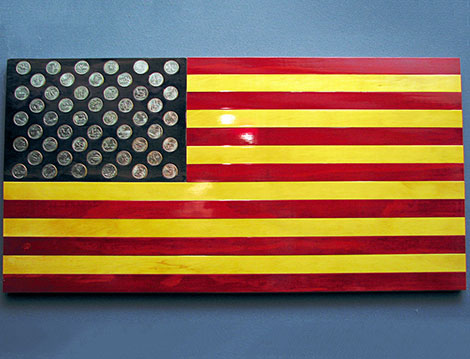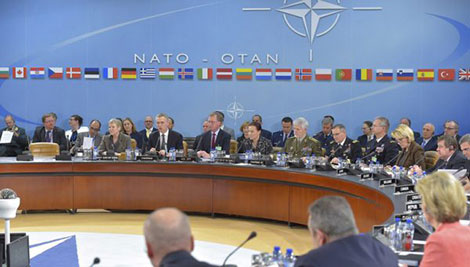
This article was originally published by the Center for a New American Security (CNAS) on 16 February 2017.
This week Secretary of Defense Jim Mattis delivered some tough love to America’s allies in Europe. Addressing NATO defense ministers, Mattis offered “clarity on the political reality in the United States.” If the allies do not want to see America moderate its commitment to them, he said, “each of your capitals needs to show its support for our common defense.”
On its face, Mattis’ call for NATO to spend more on defense is hardly new, and his words echo the public warnings given by former Secretary of Defense Robert Gates and others. This year, however, after President Trump’s repeated questioning of NATO’s value, the allies are listening especially closely. The new administration is right to call for a boost in European defense spending, but the right measure of our allies’ value is in fact much broader. An overweening focus on budget metrics risks distorting, to NATO’s detriment and to America’s, what it means to be a good military ally.
In an interview with the German newspaper Bild just before inauguration day, Trump observed that only five members currently meet the defense spending target set at NATO’s summit in Wales in 2014. Increasing that number is shaping up as a top foreign policy priority of his administration.

Trump is not wrong to protest insufficient defense spending among most NATO members. And by putting NATO members on notice, it’s entirely plausible that Trump will persuade members to invest more. But the administration should consider that there’s no guarantee that NATO members that spend more will do so wisely. It should also focus on other, more meaningful measures of value beyond topline budget figures.
Trump’s call for NATO members to spend more has a lengthy pedigree. Richard Nixon’s Secretary of Defense James Schlesinger, for instance, called on members to spend five percent of their GDP on defense. By the time Bill Clinton took office, officials took pains to note that average NATO defense spending had fallen from 4.4 percent of GDP in 1989 to 3.8 percent in 1993. During the Obama administration, Robert Gates worried openly that for most allies, “defense budgets – in absolute terms, as a share of economic output – have been chronically starved for adequate funding for a long time, with the shortfalls compounding on themselves each year.”
Now the magic number is two percent, agreed to at the Wales summit. There has been progress; since the summit, 20 of the 28 NATO member countries have increased the percentage of GDP they devote to defense. Still, with Greece, Poland, Britain, and Estonia the only members other than the United States to crack the two percent threshold, Americans rightly challenge the rest to increase their budgets.
To stop there, however, forsakes a much broader and more accurate picture of an ally’s worth.
There is spending for spending’s sake – and then there is spending wisely. In some European countries, for instance, defense spending is as much about job creation as it is about safeguarding national security. Others are squeezing greater capacity out of smaller total expenditures, which should be commended and incentivized. Norway, for instance, spends less than two percent but contributes across the board, in part because personnel costs do not eat the budget. Denmark, too, eliminated its costly submarine fleet in order to afford a doubling of its expeditionary forces.
It is instructive to look at which ally spends the greatest proportion of its GDP on defense. It’s not Britain, which has fought alongside the United States in Iraq, Afghanistan, Libya, and in operations against the Islamic State. Nor is it the Germans, who, with their paltry 1.2 percent, have made the third-highest troop contribution to the counter-Islamic State campaign. The winner is Greece, which allocates 2.4 percent of GDP to defense but can hardly be considered NATO’s vanguard. Today, Portugal is closer to the target, percentage-wise, than the Dutch, and Albania is closer to it than Canada. Clearly such budget numbers tell just part of the story at best.
A more accurate evaluation would look to other important criteria. Some allies bring niche capabilities to the fight, such as special operations forces and maritime assets, while others are integrated into America’s extended nuclear deterrent. Still others host American bases or troops on rotation. At times, allies shoulder some of the defense load in certain arenas. France, for example, took charge of counterterrorism operations in Mali, allowing the United States to focus elsewhere. When Germany declined to participate in the 2011 operation in Libya, it picked up other missions to free up NATO assets.
A broader measure of worth would also look at allies’ reliability and their will to stay engaged in grinding fights. According to the latest available statistics, Denmark and Britain have suffered more fatalities per capita in Afghanistan than has the United States, with Estonia and Canada not far behind. Such comparisons can be crude, but they demonstrate one dimension of an ally’s willingness to remain in a war engaged by NATO to defend America, rather than the other way around.
This week will see the vice president and the secretaries of state and defense visit Europe in an opening bid to build a better transatlantic alliance. As they do so, the administration should take care not to elevate accounting above strategy. This means converting its considerable leverage not only into higher spending but also plans to spend more wisely. The new team should pursue a broad program of activity, one aimed at redirecting funds toward niche capabilities, redeploying eastward to deter Russia, and enhancing NATO’s readiness to deal with crises.
These moves would make NATO fairer. They would also render it more capable and thus more valuable to the United States. That is a deal of the win-win variety.
About the Author
Richard Fontaine is the President of the Center for a New American Security (CNAS). He served as a Senior Advisor and Senior Fellow at CNAS from 2009-2012 and previously as foreign policy advisor to Senator John McCain for more than five years. He has also worked at the State Department, the National Security Council and on the staff of the Senate Foreign Relations Committee.
For more information on issues and events that shape our world, please visit our CSS Security Watch Series or browse our Publications.

